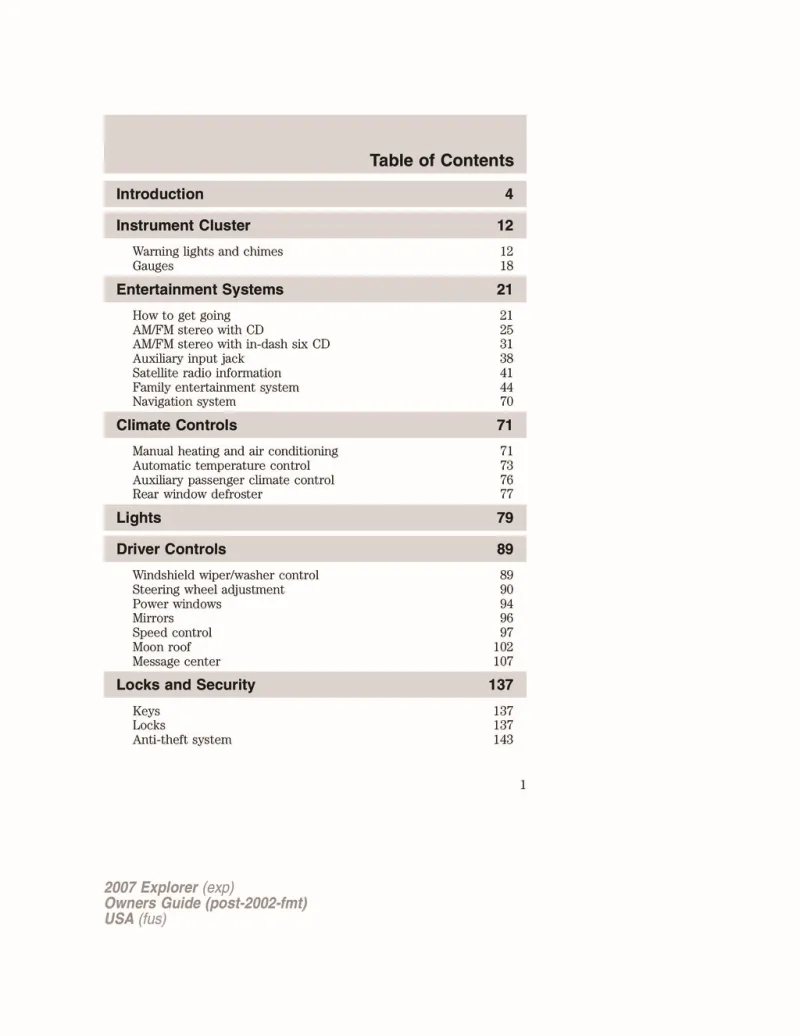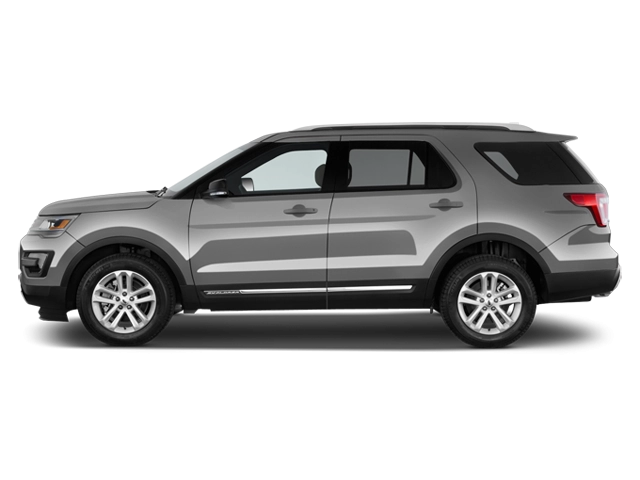2007 Ford Explorer Owner's Manual

Table of Contents
2007 Ford Explorer Overview
Introduction
The 2007 Ford Explorer is a versatile midsize SUV that seamlessly combines power, comfort, and practicality. With its rugged design and spacious interior, the Explorer is perfect for both daily commutes and weekend adventures. As one of Ford's flagship models, it embodies reliability and offers an array of features that cater to a diverse range of drivers. This generation of the Explorer stands out for its solid construction, refined driving dynamics, and an impressive array of options to customize the driving experience.
Powertrains
The 2007 Ford Explorer comes with two robust powertrain options, ensuring there is a fit for various driving needs. The standard engine is a 4.0-liter V6 that produces 210 horsepower and 254 lb-ft of torque, delivering a confident performance suited for city driving and highway cruising. For those seeking added power, the optional 4.6-liter V8 engine offers a strong 292 horsepower and 300 lb-ft of torque, providing enhanced towing capabilities and off-road performance. Both engines are paired with a smooth-shifting five-speed automatic transmission and offer the option of either rear-wheel drive or Ford’s intelligent four-wheel drive system.
Trims
The 2007 Explorer is offered in several trims to accommodate various preferences and budgets. The base XLS trim provides essential features, while the XLT adds more comfort with options such as power accessories and upgraded sound systems. The Eddie Bauer edition brings in luxury elements like leather seating and advanced safety technologies. For off-road enthusiasts, the Sport Trac trim balances utility with rugged capabilities, blending SUV characteristics with truck-like features.
Features
This SUV includes a suite of key features, such as a standard CD audio system, optional premium sound system, and available navigation. Safety is prioritized with available features including side-curtain airbags, anti-lock brakes, and stability control. For additional convenience, options like rear parking sensors and a large rear liftgate enhance practicality, making the Explorer ideal for family outings or cargo-hauling adventures.
Owner's Manual
The owner's manual for the 2007 Ford Explorer is an essential resource for any driver. It contains information on vehicle controls, maintenance schedules, and troubleshooting tips, helping owners fully understand their SUV's capabilities. Additionally, the manual offers detailed instructions for operating standard and optional features, ensuring that all drivers can maximize their exploration experience.
User manual download
The Ford Explorer owner manual for the 2007 model year is to be found in PDF downloadable format on this page. The owner manual for the model year 2007 is free and in English, but the repair manuals are usually not easy to get and may cost more.
Manual Questions
Fill the form below and someone will help you!

